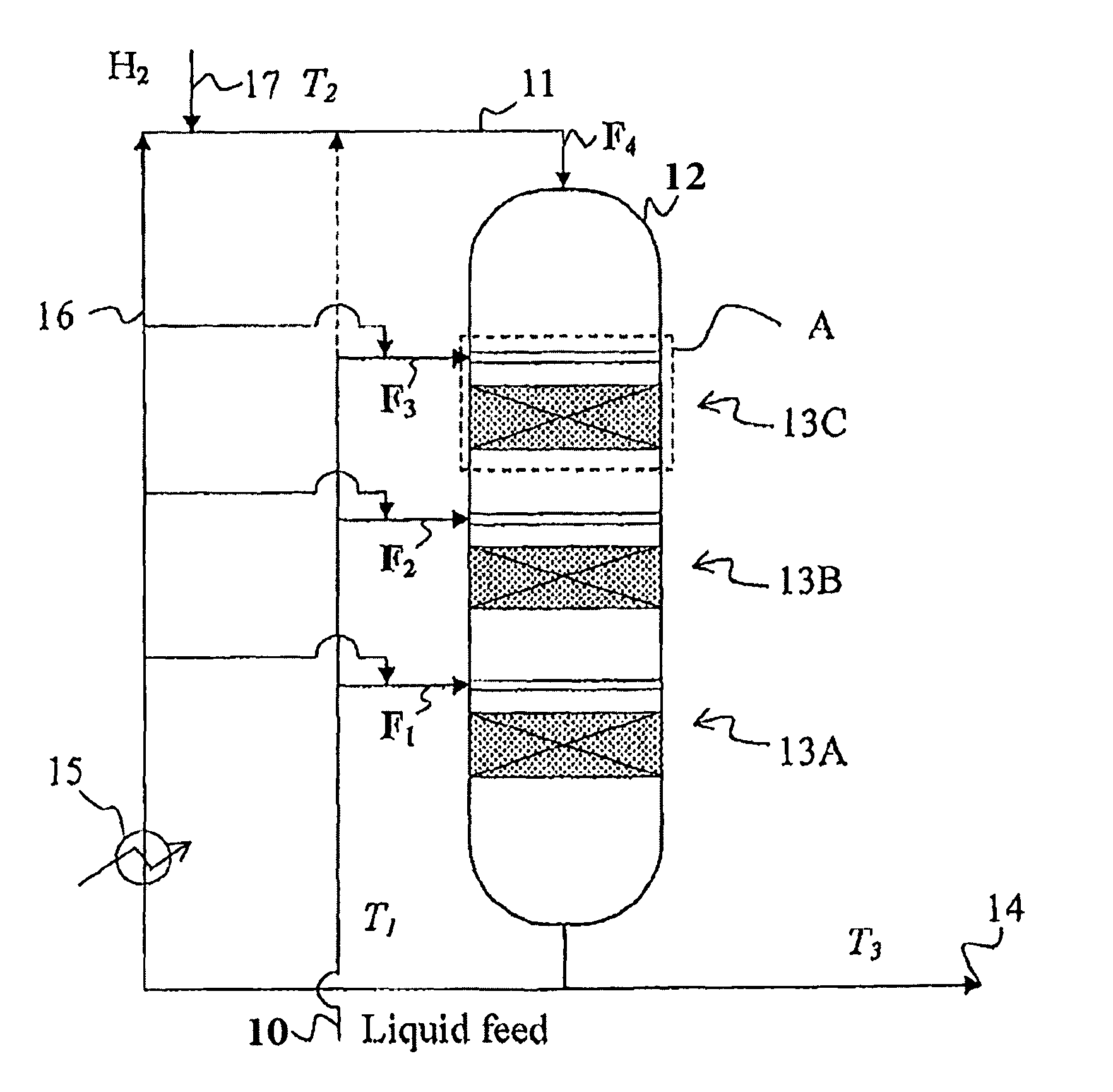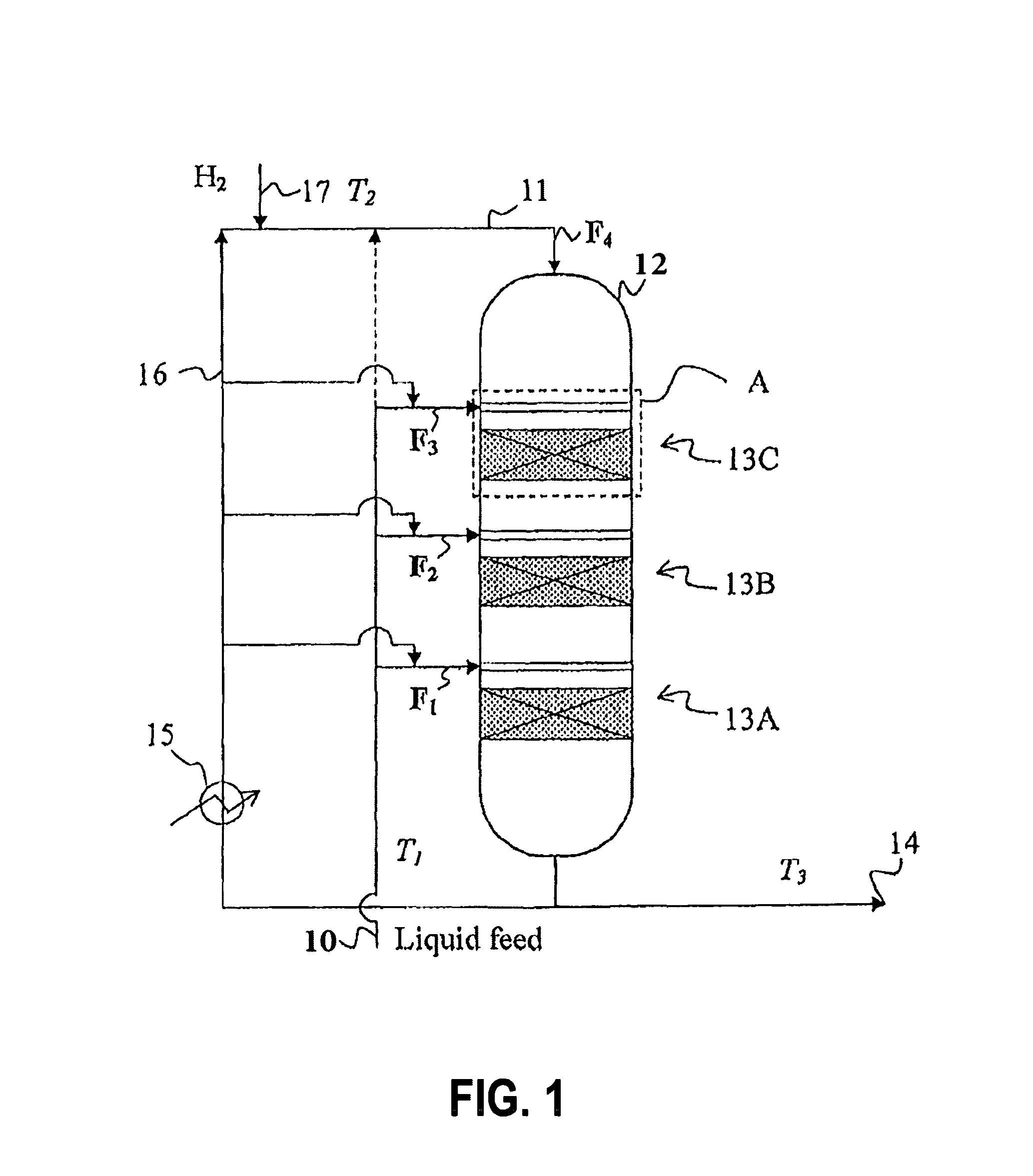Method and arrangement for feeding heat-sensitive materials to fixed-bed reactors
a technology for heat-sensitive materials and fixed-bed reactors, which is applied in chemical/physical/physical-chemical processes, chemical apparatuses and processes, organic chemistry, etc., can solve the problems of easy undesired reactions, less sensitive, and fouling of reactors and pipes, and achieves short residence time and significant reduction of thermal side reactions
- Summary
- Abstract
- Description
- Claims
- Application Information
AI Technical Summary
Benefits of technology
Problems solved by technology
Method used
Image
Examples
example
[0072]Thermal stability of purified rapeseed oil (RSO) was tested. Purified rapeseed oil was heated in a container to either 200° C. or 300° C. RSO was maintained at the final temperature for a specified time and the formation of oligomerization / polymerization products was studied. Samples of heated RSO were taken at 0 h when maximum temperature was reached, at 5 h, 22 h and finally when RSO again reached ambient temperature (25° C.) after cooling. The amount of triglycerides and oligomerisation / polymerization products was analysed using gel permeation chromatography.
[0073]Table 1 below shows that almost no oligomerisation / polymerization occurred when RSO was heated from 25 to 200° C. Even, after 22 h at 200° C. virtually no oligomerisation / polymerization was observed. When RSO was heated to 300° C. the oligomerisation / polymerization started immediately and after 5 hours at 300° C. already 16% of the feedstock was oligomerised / polymerized. In the case RSO was maintained for a longer...
PUM
| Property | Measurement | Unit |
|---|---|---|
| temperature | aaaaa | aaaaa |
| temperature | aaaaa | aaaaa |
| temperature | aaaaa | aaaaa |
Abstract
Description
Claims
Application Information
 Login to View More
Login to View More - R&D
- Intellectual Property
- Life Sciences
- Materials
- Tech Scout
- Unparalleled Data Quality
- Higher Quality Content
- 60% Fewer Hallucinations
Browse by: Latest US Patents, China's latest patents, Technical Efficacy Thesaurus, Application Domain, Technology Topic, Popular Technical Reports.
© 2025 PatSnap. All rights reserved.Legal|Privacy policy|Modern Slavery Act Transparency Statement|Sitemap|About US| Contact US: help@patsnap.com



